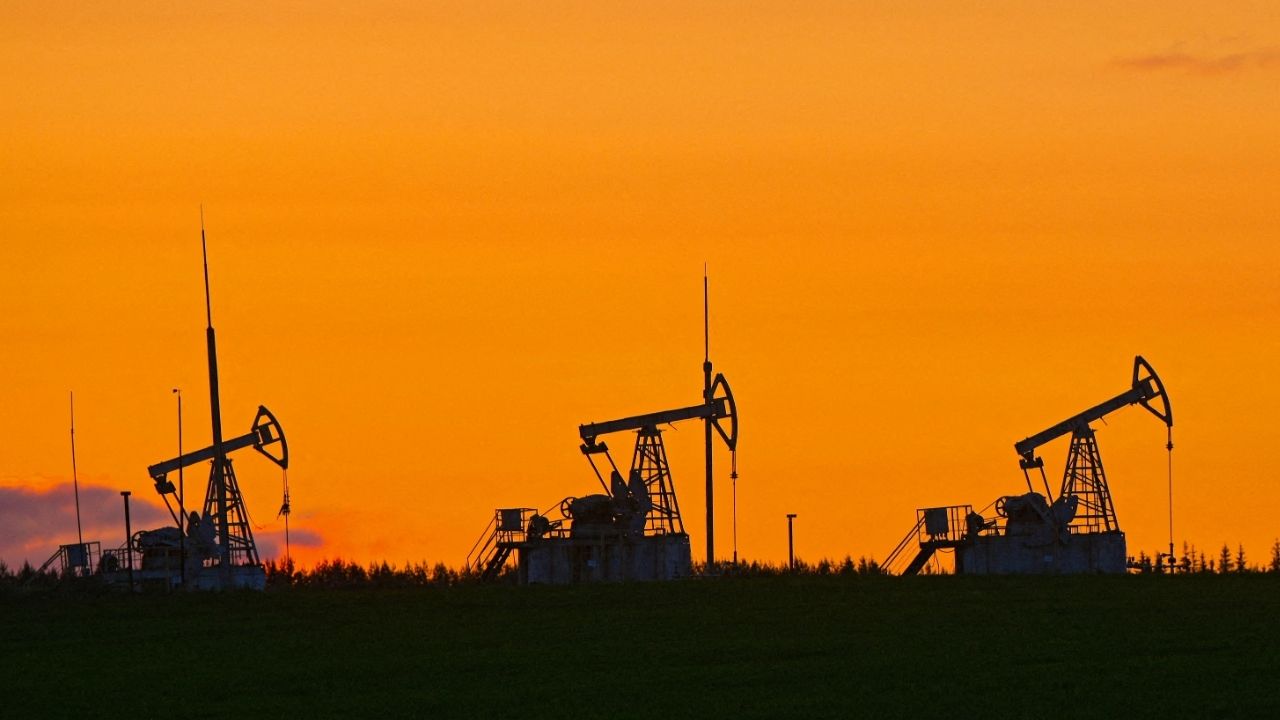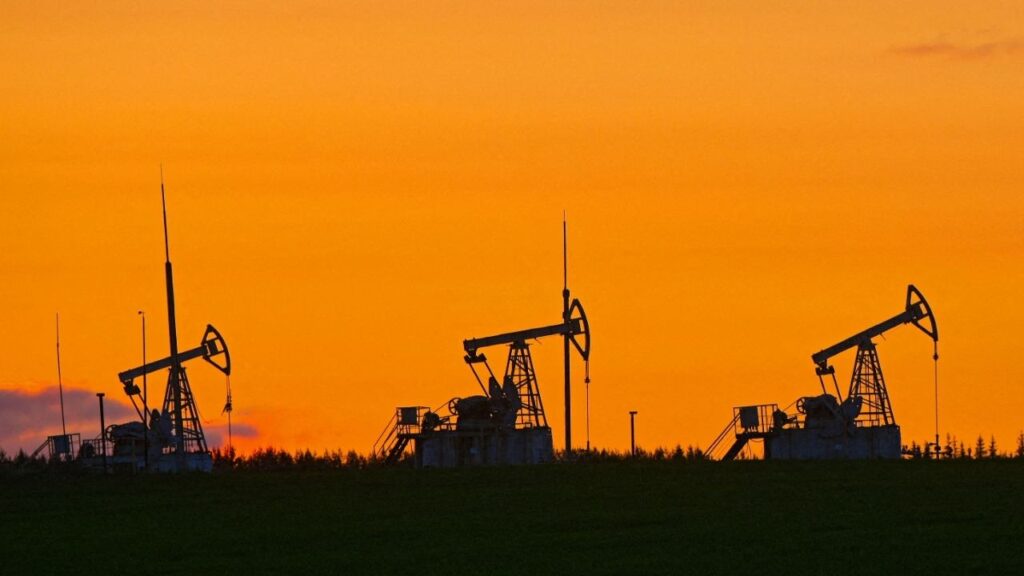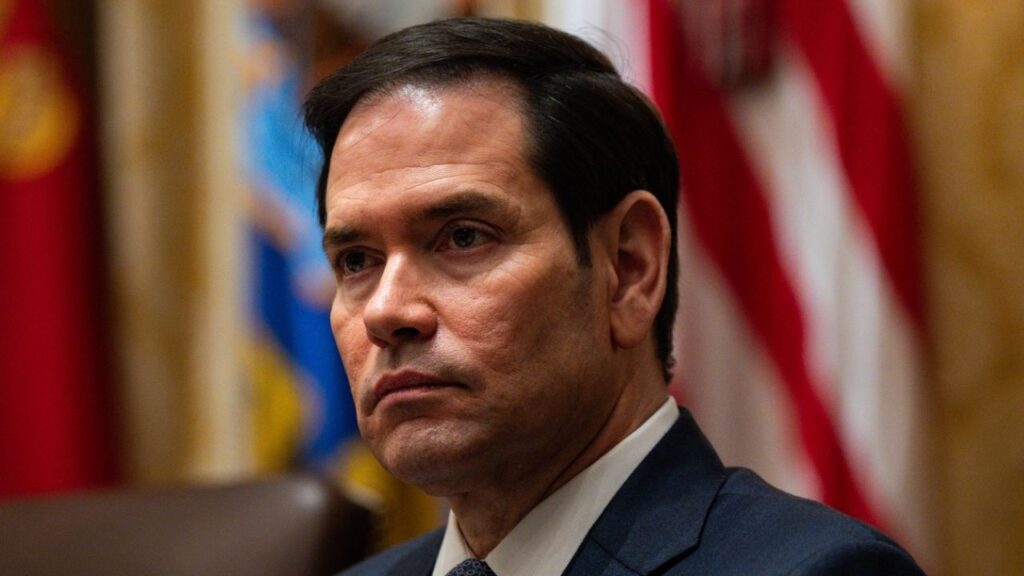A view shows oil pump jacks outside Almetyevsk in the Republic of Tatarstan, Russia June 4, 2023. (Reuters File)
Share
|
Getting your Trinity Audio player ready...
|
The world’s leading energy agency is backing away, sort of, from its view that global demand for fossil fuels could very well peak by the end of the decade.
Two years ago, the International Energy Agency caused a stir when it published a widely read analysis suggesting that the world’s use of oil, gas and coal could start to decline by the 2030s because of the energy policies many governments were pursuing. The prospect that fossil fuel demand might soon peak was seen as a potential turning point in efforts to slow climate change.
But in a major new report published Wednesday, the energy agency has a different message about a peak in fossil fuel use: It’s complicated.
The agency’s latest World Energy Outlook, a comprehensive report on global energy trends, still includes its previous “stated policies” scenario, essentially projecting that countries will continue enacting policies that help tackle climate change and adopting solar panels, wind turbines and electric vehicles at a rapid clip, potentially leading to a decline or plateau in the use of oil, gas and coal by 2035.
Unlike last year, however, the agency is also including a more conservative “current policies” scenario that assumes countries won’t enact any additional energy policies and will face obstacles in shifting to cleaner forms of power. The Trump administration had pressured the agency to include this scenario, which sees oil and gas demand rising steadily through 2050, leading to significantly more global warming.
The report’s authors say that neither scenario should be considered a definitive prediction about the future. Instead, the scenarios are intended to allow politicians to see the consequences of different policy choices.
“There can be no single or simple view on how the global energy outlook might develop,” the authors wrote.
The energy agency’s reports are highly influential and often cited by governments and investors as a basis for long-term planning. But its forecasts have also come under tremendous political scrutiny in recent years, particularly from the oil and gas industry.
Chris Wright, President Donald Trump’s energy secretary and a former fracking executive, had called the agency’s projections of peak oil demand “nonsensical.” Republicans in Congress have been threatening to cut U.S. government funding to the IEA if it does not change the way it operates. The United States, which is now the world’s largest oil and gas producer, provides around 14% of the agency’s budget and is among its 32 member states.
Critics of the IEA say the agency has been underestimating future demand for fossil fuels as emerging economies in Africa, Latin America and Asia become richer. OPEC, the oil cartel, has warned that prematurely predicting a peak in oil and gas use could lead companies to underinvest in the drilling of new wells. Then, if demand for fossil fuels remained strong, the lack of supply could lead to “energy chaos,” OPEC has said.
Wright had lobbied the energy agency to bring back its current policies scenario, which the agency had jettisoned in 2020. That scenario assumes that countries will not adopt any new policies, such as stricter fuel-efficiency standards for cars, beyond those that they have already finalized. It also typically shows a brighter future for oil and gas.
In an essay posted online, the authors of this year’s report said they were restoring the current policies scenario because it was appropriate to consider multiple possibilities for the way the future might unfold. They did not say they were responding to pressure from the United States.
“Every year, we carefully review the scenarios included” in the report “to make sure they remain as useful and relevant as possible to policymakers and other stakeholders,” they wrote. “This year is no different.”
Other analysts said that higher projections of future fossil-fuel demand failed to fully account for the rapid decline in the price of solar panels and batteries. Many emerging economies such as Brazil and India are turning to wind and solar power, lured by cheap equipment from China. Electric cars are proliferating in unexpected places, including Nepal and Ethiopia.
“There’s a revolution happening right now and it’s in renewables and electrification,” said Dave Jones, chief analyst at Ember, a London-based energy research organization. “Scenarios based on policies and legislation are behind the curve of technology change.”
In all of its scenarios, the IEA sees renewable power growing strongly, and coal-fired power declining over the next decade. But the pace of change matters: Under its current policies scenario, the agency assumes that countries have a tougher time incorporating the fluctuating power from wind and solar farms into their electric grids, and so have to burn more gas and coal.
The report also notes that demand for electricity is now rising faster than expected around the world. While some of that is a result of tech companies in places such as the United States that are now investing more than $500 billion annually in data centers for artificial intelligence, a much bigger driver is the rapidly growing demand for appliances, heating and cooling in developing countries.
The future course of fossil fuel use will have significant implications for climate change, the report says.
Under the stated policies scenario, the world is expected to warm roughly 2.5 degrees Celsius, or 4.5 degrees Fahrenheit, this century compared with preindustrial levels. But under the current policies scenario, where oil and gas demand keeps rising for decades, global warming reaches 2.9 degrees Celsius by 2100 and then keeps climbing.
While that difference may sound minor, scientists have found that an extra half-degree of warming brings significantly greater risks from heat waves, floods, drought and species extinction. (The world has already warmed roughly 1.3 degrees since preindustrial times.)
The IEA report also notes that nations are still lagging on another front: Ensuring that everyone has access to basic energy services. Roughly 730 million people still lack access to electricity, and an additional 2 billion rely on polluting and unhealthy cooking methods such as burning wood or dung indoors.
Fixing that, the agency says, would require roughly $300 billion in new investments by 2035 in grids and cleaner cooking fuels, including gas.
—
This article originally appeared in The New York Times.
By Brad Plumer
c. 2025 The New York Times Company
RELATED TOPICS:
Categories

What if Democrats’ Big Shutdown Loss Turns Out to Be a Win?


















